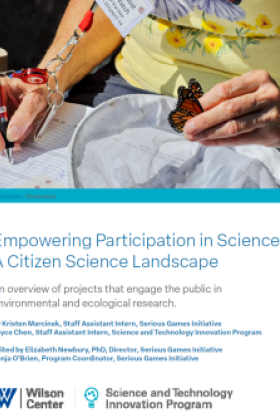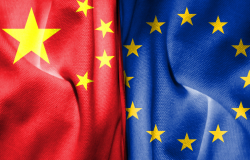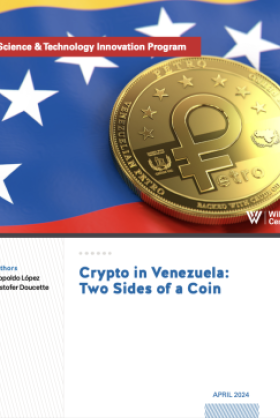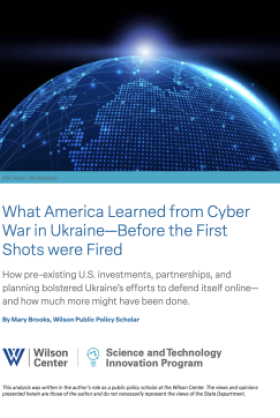New Nanotechnology Consumer Products Inventory
From laptop computers to sunscreens to stain-resistant clothing, nanotechnology is gaining ground in the consumer products marketplace. The Project on Emerging Nanotechnologies launches the only publicly available, online, and searchable inventory of nanotechnology-based consumer products.
The Project on Emerging Nanotechnologies at the Woodrow Wilson International Center for Scholars today launched The Nanotechnology Consumer Products Inventory. This is the first and only publicly accessible online inventory of nanotechnology consumer products. The inventory currently contains information on 212 manufacturer-identified nano products. This far exceeds the existing federal government-accepted estimate of approximately 80 consumer products.
The inventory furthers the Project on Emerging Nanotechnology's mission to encourage discussion about nanotechnology's benefits and its promise, as well as its safety and environmental impacts. Currently, the searchable database catalogs consumer products using nanotechnology or containing nano materials – from sunscreens to refrigerators and cultured diamonds. While not complete, it is the most comprehensive repository of nanotechnology consumer products available to the public, policymakers, and industry.
"We are at the vanguard of discovering the endless benefits of nanotechnology for applications like targeted cancer treatments and more efficient solar cells. With this inventory, we also are learning that this technology is already being incorporated into our daily lives. It's on store shelves and being sold in every part of the world," said David Rejeski, director of the Project on Emerging Nanotechnologies, which is supported by The Pew Charitable Trusts.
Until now, there was no known broad list of specific products using or containing nanotechnology that was readily accessible to consumers, retailers, researchers, and the media. The U.S. government relies on data compiled by EmTech Research regarding how nanotechnology is marketed and used commercially. The Project's inventory was developed in response to consumer interest in nanotechnology and its commercial uses. It provides the public with a first look at the vast array of acknowledged products companies are currently making available to shoppers.
Findings
Beginning in 2005, the Project began compiling products and materials containing nanotechnology from around the globe for inclusion in the consumer inventory. Entry to the list is based primarily on online, English language information provided by the product manufacturers. It does not include nanotechnology consumer products which companies have not identified as such.
With these caveats, notable findings from the data in the inventory include:
- Health and fitness is the most robust category in the inventory, with 125 products to-date, everything from face creams to hockey sticks. Electronics and computers make up the second largest category with 30 products, followed by the home and garden category;
- Within the health and fitness category, clothing—such as stain-resistant shirts, pants and neckties—constitutes the largest sub-category with 34 products, followed closely by sporting goods (33 products) and cosmetics (31 products);
- The U.S. is the overwhelming leader in consumer nanotechnology product development with 126; East Asia and Europe follow with 42 and 35 nano products respectively; and
- Nanoengineered carbon is the most common material used in the nano products included within the inventory, followed by silver and silica.
"Nanotechnology's potential is vast and it's real. The opportunity for nanotechnology ranges from improving Olympic sports equipment to discovering better treatments for Alzheimer's disease," said Andrew Maynard, science advisor of the Project on Emerging Nanotechnologies. "But our ability to reap the long-term benefits of nanotechnology – in areas from energy production to medicine – will depend on how well industry and government manage the safety and performance of this first generation of products."
About Nanotechnology
Nanotechnology is the ability to measure, see, manipulate and manufacture things usually between 1 and 100 nanometers. A nanometer is one billionth of a meter; a human hair is roughly 100,000 nanometers wide.
The National Science Foundation predicts that the global marketplace for goods and services using nanotechnologies will grow to $1 trillion by 2015. The U.S. invests approximately $3 billion annually in nanotechnology research and development, which accounts for approximately one-third of the total public and private sector investments worldwide.
Inventory Data
Every item contained in the inventory is manufacturer-identified. Any statements, claims and views expressed by a manufacturer or third-party contained in this inventory are solely those of the party making the statement or claim.
Product details include: the product name, company/manufacturer or supplier information, country of origin, and category or subcategory, as well as a product photograph and description, hyperlink to the product website and the date that the product was added to the index.
Products are grouped according to categories based loosely on publicly available consumer product classification systems, which include health and fitness, electronics and computers, home and garden, food and beverage, automotive, appliances and children's goods. The inventory also uses sub-categories. For example, paint is a sub-category labeled under the home and garden main category.
The inventory will be updated regularly as new information is available. Users are encouraged to submit new product information for consideration to nano@wilsoncenter.org.
Special Launch Event and Webcast
The Center will formally release the Nanotechnology Consumer Products Inventory at a special launch event today from 2:00 – 3:00 p.m. EST at the Woodrow Wilson International Center for Scholars, located at 1300 Pennsylvania Avenue, N.W., Washington, D.C., 5th floor conference room.
High resolution photos of products in the nanotechnology consumer products inventory are available to the media at ftp://wwicsftp.wilsoncenter.org Username: WWICSFtp Password: p+F$c1WW. Questions regarding photos should be directed to Alex Parlini: alex.parlini@wilsoncenter.org or (202) 691-4282.
About the Organizations
The Project on Emerging Nanotechnologies is an initiative launched by the Wilson Center and The Pew Charitable Trusts in 2005. It is dedicated to helping business, government and the public anticipate and manage possible health and environmental implications of nanotechnology.
The Pew Charitable Trusts is a national charitable organization serving the public interest by informing the public, advancing policy solutions and supporting civic life. Based in Philadelphia, with an office in Washington, D.C., the Trusts will invest $204 million in fiscal year 2006 to provide organizations with fact-based research and practical solutions for challenging issues.
The Woodrow Wilson International Center for Scholars is the living, national memorial to President Wilson established by Congress in 1968 and headquartered in Washington, D.C. The Center establishes and maintains a neutral forum for free, open, and informed dialogue. It is a nonpartisan institution, supported by public and private funds and engaged in the study of national and international affairs.
Related Program

Science and Technology Innovation Program
The Science and Technology Innovation Program (STIP) serves as the bridge between technologists, policymakers, industry, and global stakeholders. Read more










